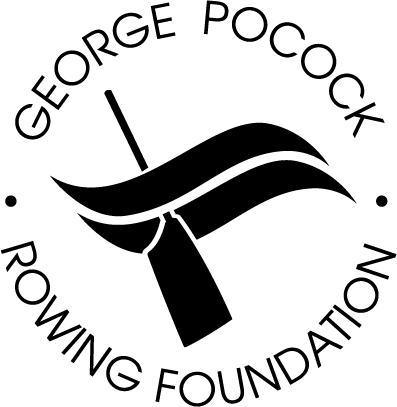What rowing in the Pocock Youth Rowing Program means for young people
“The community that grows from doing challenging things together is one of the greatest strengths of this team and this sport.”
If there is one thing to be grateful for during the pandemic, it’s the time it gave us to take a step back, pause, consider, and analyze many aspects of our lives, our organization, and our programs.
The GPRF’s Pocock Youth Rowing program led by Helen Tilghman faced many challenges during Covid, not unlike the majority of rowing programs around the nation. One area of consideration for Helen was how to maintain a large team, and produce competitive results across multiple spectrums, all while creating greater balance in training with fewer injuries and less athlete burnout. This is not a simple pursuit, and it does not have a simple answer.
At this juncture, you may be asking yourself if there is such a thing as injuries in youth rowing or burnout for that matter. These are just young people, after all. They bounce back quickly after a tough practice and team sports are just for fun, aren’t they?
I sat down with Helen to ask her some questions that have been circulating recently in our minds and in our boathouse.
Q: I’ve heard this term, Long-term Athlete Development (LTAD) floating around a lot in our conversations. What does that mean and how does it change the way you envision the program going forward?
The Long-Term Athlete Development (LTAD) term is a view on a training model that focuses on achieving more while doing less in the short term, so that athletes can do more over the long term. The fundamentals of this model are to challenge and develop athletes at a level appropriate to their physical, intellectual, and emotional development stage. It conceptualizes the viewpoint that peak athletic performance and social-emotional growth are mutually dependent, not exclusive. In this framework, our coaches at the Pocock Rowing Center aim to teach the athletes lessons that matter beyond just the boat. Rowing teaches this lesson by necessitating a uniquely high level of humility, determination, accountability, and selflessness in order to achieve high performance results. Thus, we must attend to developing both in our regular training.
What it comes down to is that the LTAD model is about human development, not just athletic development.
We bear a responsibility to continue evolving the sport to better serve today's athletes. This requires examining our training approach, scheduling, skill development, competitive structures, and coaching expectations. In short, we must be wary of our assumptions about what is the 'right way' to do things and must continue to foster innovation.
2. How does the LTAD model impact athletes who want to be competitive at the highest possible levels?
If we’re talking about being successfully competitive at the highest possible level, you have to decide what that is, and that might span a period greater than whatever chapter you're in right now.
Athletes are now peaking in their late twenties to early thirties, and sometimes even the highly competitive athletes are peaking in their mid thirties. What this means is that at ages sixteen, seventeen, eighteen, you’re still just scratching the surface of what high performance can be.
In comparison to many other sports, rowing requires higher social-emotional intelligence to be successful over the long term.
It also requires really high levels of cardiovascular endurance, much like marathon running, or competitive cycling. If you take those athletic pursuits in comparison to rowing, you will find that most of the athletes in them are finding success later in life because of when the peak for endurance really is.
It’s essential then, that coaches keep an eye on whether they are sacrificing an athlete’s post high school career to help them win at a junior national championship, or setting them up to continue rowing at a higher level beyond now.
Coaches are responsible for recognizing the drive and determination of their athletes at this (junior) level and it is imperative that coaches provide athletes with perspective of what they can do. If a coach identifies an athlete with the potential to compete at a world championship event or the Olympics, then that athlete’s ceiling is well beyond their current level, and the current ceiling is a piece of the journey, not just the destination at graduation.
3: As we think about the LTAD and athlete expectations, what does the program look like for younger/less experienced athletes? What sort of time commitments do they have and how do you think about their development, if differently from the older and more experienced athletes?
I think about this in reverse. I look at the older athletes as well as the full time youth who are on a 100% committed training schedule (for instance, the most experienced, skilled, and trained athletes in the program), and then I scale appropriately for the different ages. We can look at the intentional progression of volume and intensity in the training, with the goal of bringing the less experienced athletes up to the same level in training and workload to be on an equivalent level as the experienced athletes.
I think about it like going to the gym. You wouldn’t show up on day one and expect to do a bodyweight unassisted pull up if you’ve never done one before in your life. You would scale the movement based on your ability and fitness level and build on a progression to reach the ultimate goal. We scale our training plans in the same way.
On the commitment side of things, our goal is that newer, younger athletes have an experience they love. We want them to embrace the community, the atmosphere, the training and love it so much that they want to take on bigger challenges. If they are getting an appropriate level of dosing of those bigger challenges 3-4 times a week, they will be interested in and prepared for additional time commitments.
One of the main concerns here is to ensure that the younger athletes don’t have to eliminate other choices yet (like other sports or extracurriculars). By the time they become more experienced athletes, they can choose something they have fallen in love with and approach it with a level of understanding of the commitment. We find that athletes are more intrinsically motivated when they've been given the agency to make that choice versus being forced into the required time commitment.
Healthy and inclusive training, open team community, and educational resources are key elements of a productive training environment. We structure our programs to cover these areas of need across our team.
4. How can parents support their athlete's rowing experience?
My advice would be to give athletes space to be the ones in charge of their rowing experience, both when they are excited and when they're being challenged. Make sure the athlete is the one leading communications with coaches and teammates.
It’s also important to let them pack their own bags - preparing themselves gives them agency to be in charge of themselves and their decisions.
And ask questions! Asking questions about the sport and their program allows them to show the expertise they are getting from this experience and demonstrates they own it. Let them be the authority and subject matter expert. They need to have that confidence to be successful in the boat.
5: How does college recruiting work and will an athlete have any opportunities at that level?
First of all, yes, absolutely.
The LTAD model done correctly at the youth level will not only keep the door open for college recruiting opportunities but will provide more in-depth opportunities at that level because the athlete will be ready to move up into it. The LTAD model gives athletes the best shot of being successful and enjoying a full collegiate career, whatever that may entail.
College coaches see athletes burn out - physically and emotionally - all the time. This puts a burden on their recruitment and retention. They need athletes that are not going to just survive 4-5 years in college, but thrive. This means coming into a program with room to grow, and being able to converse with a coach about what they’re learning and their skill level. Our philosophy in the Pocock Youth Rowing program fosters elements of social-emotional learning, high quality instruction and competition for athletes at all levels. In an ideal world, the high school rower enters a collegiate program with plenty left in the tank and has the ability to take on a new environment, a new team, new expectations, and a new workload. It’s not just about having fast erg scores or pulling faster on the water in races.
Final Thoughts?
My hope is that athletes have such an experience with us, that whenever it is they leave the sport it is their choice, it’s not because they can’t do it anymore, or don’t enjoy it any because their bodies are breaking, it’s an intentional choice and they are going to do something else with their time.


